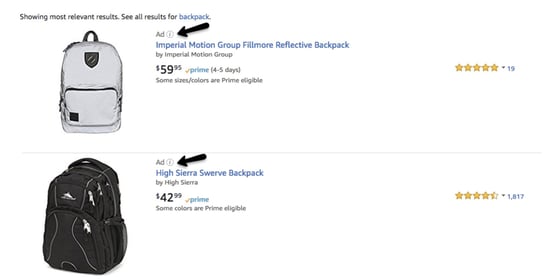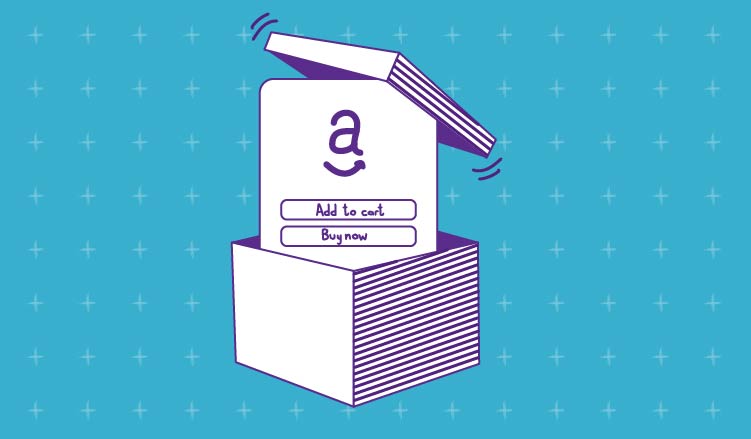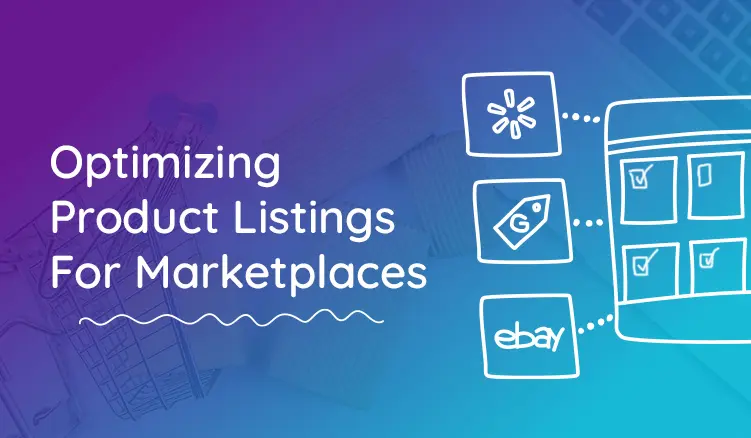Amazon continues to dominate the ecommerce landscape with 2.45 billion monthly visitors and 89% of customers saying they are more likely to purchase from Amazon than any other marketplaces. But, these numbers come as no surprise as they offer competitive pricing, free shipping, and convenience.
As a seller on this platform, reaching even a fraction of this amount means you could get more sales, increase brand awareness, drive traffic to your website, and grow your business.
Take Nutpods for example. This multimillion-dollar business with customers from all over the world used to be a small business in Seattle selling dairy-free creamer. Now, they’re competing against the likes of Nestlé, a huge deal in the industry.
But, not every business can become like Nutpods and that has a lot to do with the competition on Amazon. It is brutal and the Amazon A10 algorithm doesn’t make it any easier to gain exposure. So, what do brands do when they want to become more visible on Amazon? They start doing Amazon Ad campaigns.

Why businesses opt for Amazon advertising
With this much competition on Amazon, many companies found it challenging to rank number one, especially since the Amazon A10 algorithm considers;
- Sales History
- Impressions
- Conversion Rate
- Internal Sales
- Click-Through-Rate (CTR)
- Off-Site Sales
- Organic Sales
- Pay-Per-Click (PPC) Sales
The algorithm heavily focuses on seller authority. How many sales you’ve made, how long you’ve been selling on Amazon, seller feedback and ratings, returns, as well as their product range. But how can you make sales when you don’t have visibility.
Campaign ads help you get that visibility. They help businesses target the right customers, improve sales history and product visibility, increase brand awareness, and gain valuable insights on changing shopping behavior in order to optimize campaigns to reach a more targeted audience.
But, with this, comes a price that many small businesses are struggling to keep up with.
How is the increasing Amazon ad cost affecting SMBs?
According to the Small Business Administration, 20% of SMBs fail in their first year, 50% after five years, and only 33% of these businesses make it to 10 years or longer. One of the main reasons was the lack of capital for the overall running of the business as well as how much would go to marketing.
With the increase in Amazon ads, businesses have to pay on average anywhere from $0.05 to $10 per click for PPC campaigns in 2022 to ensure:
- An increase in product visibility and your overall ranking so that you appear on the first page as 70% of Amazon visitors never go past it
- More revenue as on average Amazon sellers can earn between $1,000 to $25,000 a month.
The major issue here is that the cost isn’t set in stone, making it hard to budget especially when there is increasing competition. This explains why 59% of Amazon sellers are concerned about the increasing advertising costs in 2022.
But, while bigger businesses may be concerned about the costs, they still have the revenue to continue with Amazon ads. The same cannot be said for small to medium-sized businesses.
According to this article, advertising on Amazon for SMBs can amount to $100,000. And, The Institute for Local Self-Reliance found that in 2021, Amazon merchants spent an average of 4.6% of their year's sales revenue on Amazon advertising. This is a 1.1% increase since 2016.
While there isn’t much control businesses have on the increase in the cost of Amazon Ads, it does highlight the need for other alternatives. Organic alternatives, such as product listing optimization, don’t require merchants to spend dollars in order to rank better on the platform.
How can product listing optimization help?
Much like search engine optimization (SEO), product listing optimization (PLO) helps brands improve their product listing so that it ranks higher on a specific sales channel. In this case, it would help businesses improve the ranking of their Amazon product listing. PLO is a free tactic that can help increase traffic and conversions (read here for more tips).
Most retailers will add their products to Amazon with basic information such as product title, images, key product features, and detailed descriptions. But, like most things, the bare minimum can only get you so far. To get Amazon’s algorithm to make your product visible to a customer, you need to upgrade your product listing.
This means:
- Adding high-quality product images from different angles to give customers a 360-degree view
- Picking relevant keywords that are related to your product to help browsers and shoppers find your product more easily
- Providing good customer service to increase reviews as almost 79% of US shoppers check out Amazon customer reviews
- Creating rich product descriptions that give information about features, size, availability, style, and benefits of the product
- Optimizing product titles by making your product names long and descriptive
When you create a listing that meets the criteria for Amazon’s algorithm, you’re able to ensure customers can easily find your product, read the product description, and ultimately make a purchase at no extra cost to your business.
This is valuable for all businesses. For SMBs that have the funds available for Amazon Ads, they can still use product listing optimization to help further improve their visibility and ranking. But, product listing optimization can also be an effective way for businesses with fewer resources to increase their visibility, improve conversions, and help you rank higher without paying for ads.
Let Plytix help with your product listing optimization
If you are planning on optimizing your listings, you need to consider a PIM for your Amazon listings. Why? Because having a product information tool allows you to optimize your product information all from one tool. Editing and tweaking on an Excel spreadsheet make these tedious tasks even more time-consuming as you’re bound to have spelling errors, pricing mistakes, or duplicate content. According to studies, 88% of spreadsheets contain errors. This is because Excel has no way of checking whether all the figures match real results but a PIM can help control data quality.
With a PIM like ours, you don’t only get the most affordable PIM for small businesses, but you’re able to work within the tool as you would with a spreadsheet. And when you're done creating your product content, you can share it with other sales channels with our marketplace connector. This means you can create, edit, update, and syndicate to other platforms all in the same place. This cuts back on errors and time-wasting allowing you to optimize efficiency.
Read this free eBook for more information. But, feel free to reach out to us today and request a demo. Enjoy a streamlined process when it comes to product content syndication with this ecommerce catalog management tool.




